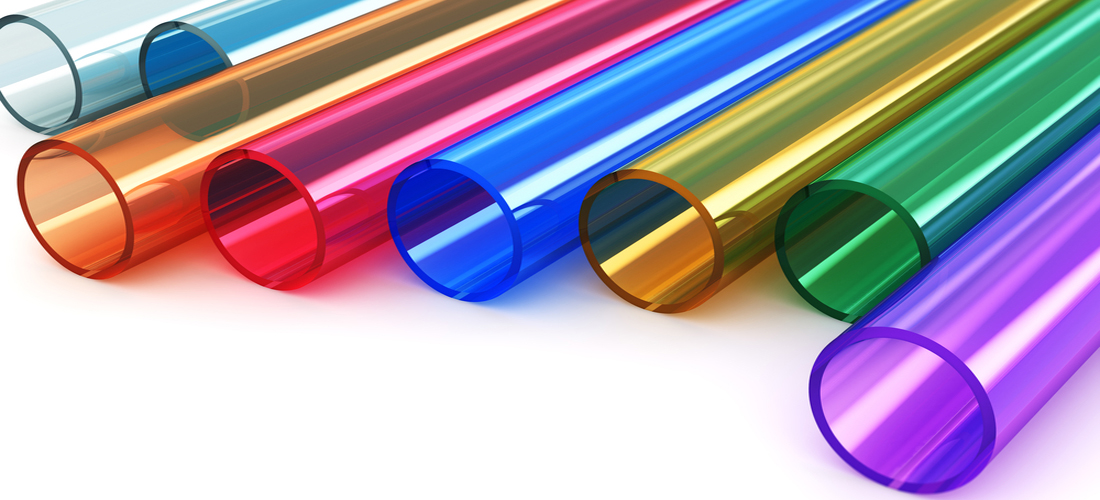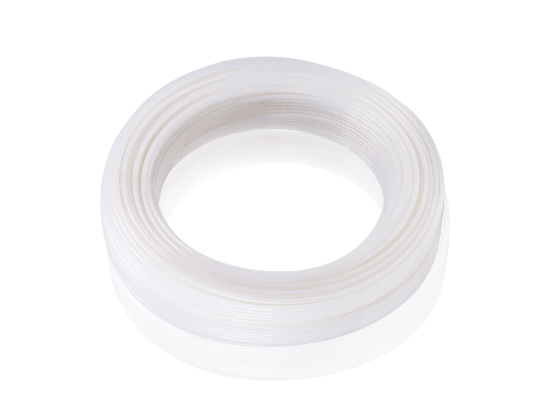Polypropylene Tubes,made from homopolymer, block copolymer, and random copolymer polypropylene materials through extrusion and injection molding processes are crystalline polyolefin thermoplastic resin pipes, which can be abbreviated as PP tube.
The Core Features of Polypropylene tube
In polypropylene, each repeating unit carries a side group, which increases the rigidity of the molecular chain. As a result, the processed pipes exhibit excellent chemical resistance, high rigidity, good heat resistance, and outstanding weldability.
In addition, polypropylene can also be used as a type of transmission tubing. However, due to its large thermal expansion coefficient, poor flexibility, and tendency to become brittle at low temperatures, its applications are not as extensive as those of PE pipes.
Specifically, PP pipes have only moderate flexibility and low-temperature impact resistance, but their resistance to hot water and weldability make them more advantageous in applications such as hot and cold water supply, heating systems, and chemical pipelines.

The advantages of Polypropylene Tube
Polypropylene tubing has the advantages of chemical resistance, high temperature resistance, lightweight and non-toxic, Let's explore other structural advantages of this tube.
Strong chemical resistance:PP tube is a non-polar material with a relatively stable molecular chain structure and a high degree of crystallinity.
High temperature resistance:Polypropylene has a relatively high melting point and good thermal stability. Polypropylene tube can maintain their mechanical strength and shape within a certain temperature range.
Lightweight and High Strength:PP itself has a low density of about 0.9 g/cm³, and when it has a high degree of crystallinity, it gives polypropylene tube materials good rigidity and impact resistance.
Non toxic and odorless:PP tube can be used in industries such as food, drinking water, and pharmaceuticals, and meets safety standards because of its good Chemical inertness.
Smooth inner wall:Due to its smooth inner wall and low fluid resistance, pp tube can be used as a transmission conduit to reduce fluid friction and increase flow rate.
Affordable price:Compared with high-end plastics such as PTFE and PVDF, pp tube has a high cost performance ratio.
Structural Features Of Polypropylene Tube
At the microscopic structural level, PP tubes have high rigidity and a relatively high degree of molecular crystallinity; In terms of processing structure, they can be manufactured into various types such as solid-wall pipes, reinforced pipes, and multilayer composite pipes. Before use, it is necessary to understand the relevant parameters of PP materials in order to produce pipe structures that meet the intended application requirements.
Material characteristics
Chemical Resistance: Excellent resistance to acids, alkalis, and organic solvents
Thermal Resistance: Suitable for continuous use up to ~100–110°C
Low Density: Lightweight, with good stiffness and rigidity
Good Fatigue Resistance: Withstands repeated bending and vibration
Specification
| Property | Typical Value |
|---|---|
| Material Type | Polypropylene (PP) |
| Temperature Range | 0°C to +100°C (short-term up to 120°C) |
| Density | ~0.90 g/cm³ |
| Hardness (Shore D) | 65–75 |
| Tensile Strength | 30–40 MPa |
| Color Options | Natural, white, grey, or custom |
| Sizes Available | ID from 1 mm to 50 mm or larger |
Application diversity
laboratory:Sample processing, medical reagent packaging, and small-sized polypropylene tubes such as 13 × 75mm Polypropylene Tubes have good chemical inertness, heat resistance, and dimensional stability
Specifications and dimensions of Polypropylene Tube
Polypropylene tubing exhibit diversity in terms of applications, performance, and installation compatibility, specifically including differences in diameter, length, wall thickness, specifications, and usage.
OD:outer diameter (OD) of the pipe is typically a standard size;
ID:inner diameter (ID) of the pipe directly affects fluid flow rate
WT:wall thickness (WT) of the pipe influences pressure resistance and mechanical strength.
Fokcavalve offers polypropylene pipe dimensions types with commonly available outer diameter (OD) sizes of 1/4", 3/8", 1/2", 5/8", and 3/4".
Application of Polypropylene Tube
Polypropylene tubing possess excellent properties such as corrosion resistance, high temperature and pressure tolerance, hygienic safety, and smooth inner walls, making them highly effective for fluid transmission in the following industrial pipeline fields.
◆ Building water supply and drainage systems
◆ Chemical industry
◆ Pure water and drinking water systems
◆ Agricultural irrigation systems
◆ Piping systems in the food and pharmaceutical industries
◆ Wastewater treatment systems
Polypropylene Tube vs polystyrene tube
| Features diffrence | Polypropylene Tube | polystyrene tube |
| Material properties | Thermoplastic, chemical resistant, corrosion-resistant | Thermoplastic, low strength, high transparency |
| Temperature resistance | Good heat resistance | Bad heat resistance |
| Chemical resistance | Resistant to corrosion from most acids, bases, and organic solvents | Sensitive to most solvents and easily soluble in benzene solvents |
| Transparency | Opaque or semi transparent | High transparency |
| Processing and molding | Easy to extrude and weld, suitable for manufacturing pipeline systems | Mainly using injection molding |
Get Polypropylene Tube From Fokcaflow
Currently, the popular development trend of Polypropylene tube in the market is to further improve its mechanical strength and heat resistance to meet the production demands of different applications.
















